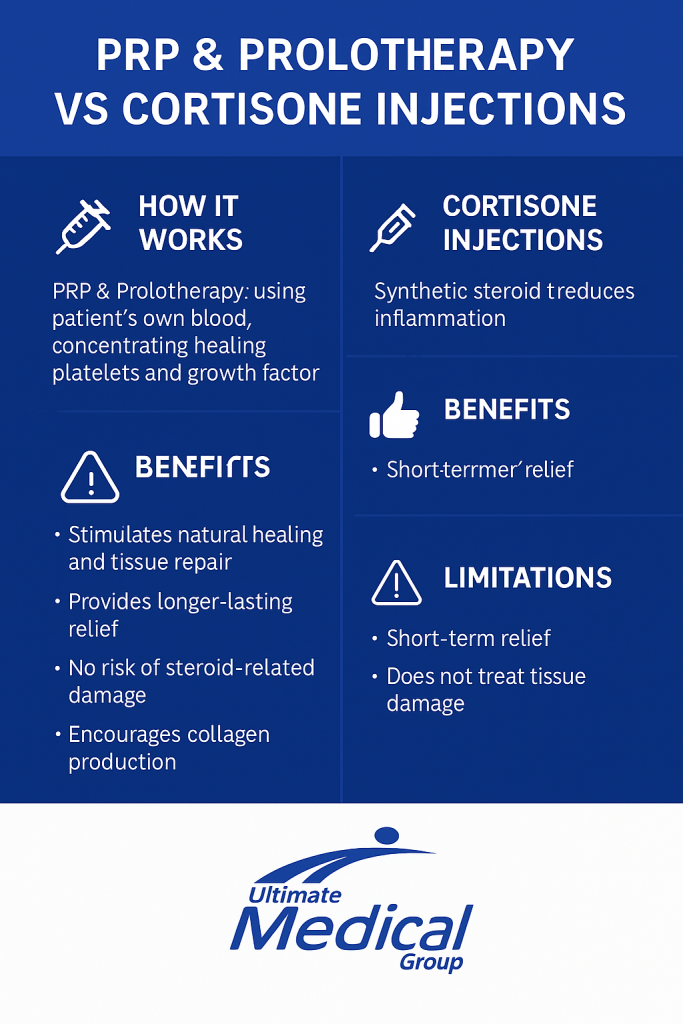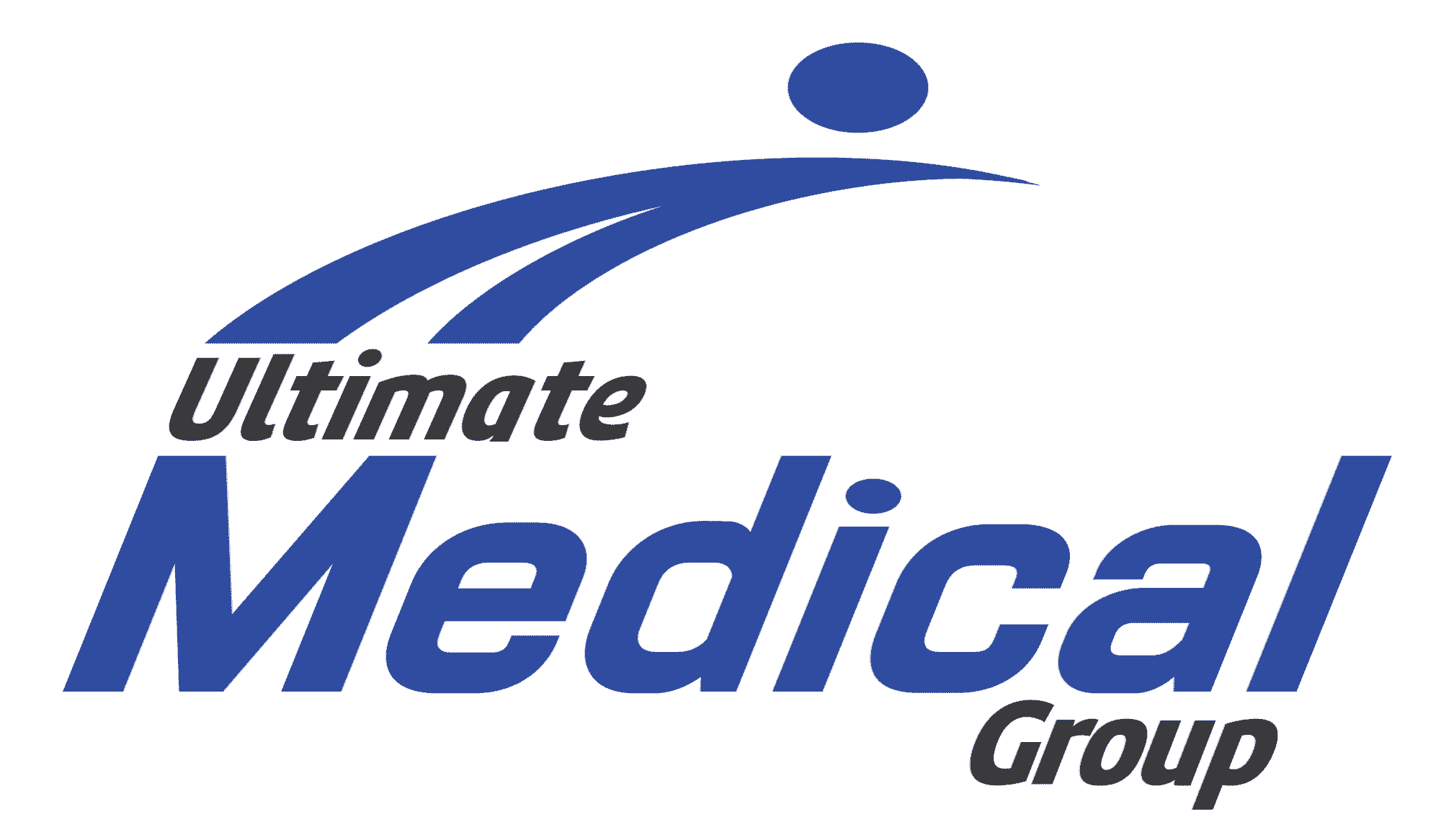
- How Cortisone Injections work: A synthetic steroid that reduces inflammation quickly.
- How Patient Benefits: Rapid pain relief (often within days).
- Pros/Cons:
- Relief is usually short-term (weeks to a few months).
- Does not address the underlying tissue damage.
- Repeated injections can weaken tendons, cartilage, and joint structures, sometimes making the condition worse over time.
PRP (Platelet-Rich Plasma)
- How PRP Works: Uses the patient’s own blood, spun down to concentrate healing platelets and growth factors, then injected into the injured area.
- How Patient Benefits:
- Stimulates natural healing and tissue regeneration.
- Can improve tendon, ligament, and joint health.
- Typically provides longer-lasting relief compared to cortisone.
- No risk of steroid-related tissue weakening since it’s from your own body.
Prolotherapy
- How Prolo works: Involves injecting a mild irritant solution (often dextrose) into the injured ligament or tendon attachment, which stimulates the body’s healing response.
- Key Benefits:
- Encourages new collagen production, strengthening weakened tissue.
- Targets the root cause by repairing lax or damaged structures.
- Like PRP, effects tend to be longer-term compared to cortisone.
Why PRP or Prolotherapy is Preferred Over Cortisone Injections:
- Healing vs Masking: PRP and prolotherapy promote actual tissue repair, whereas cortisone mainly masks inflammation.
- Long Term: Relief from PRP/prolotherapy can last months to years, while cortisone may wear off after weeks.
- Safety Concerns & Options: Cortisone carries risk of tissue damage with repeated use; PRP and prolotherapy are considered low-risk regenerative options
